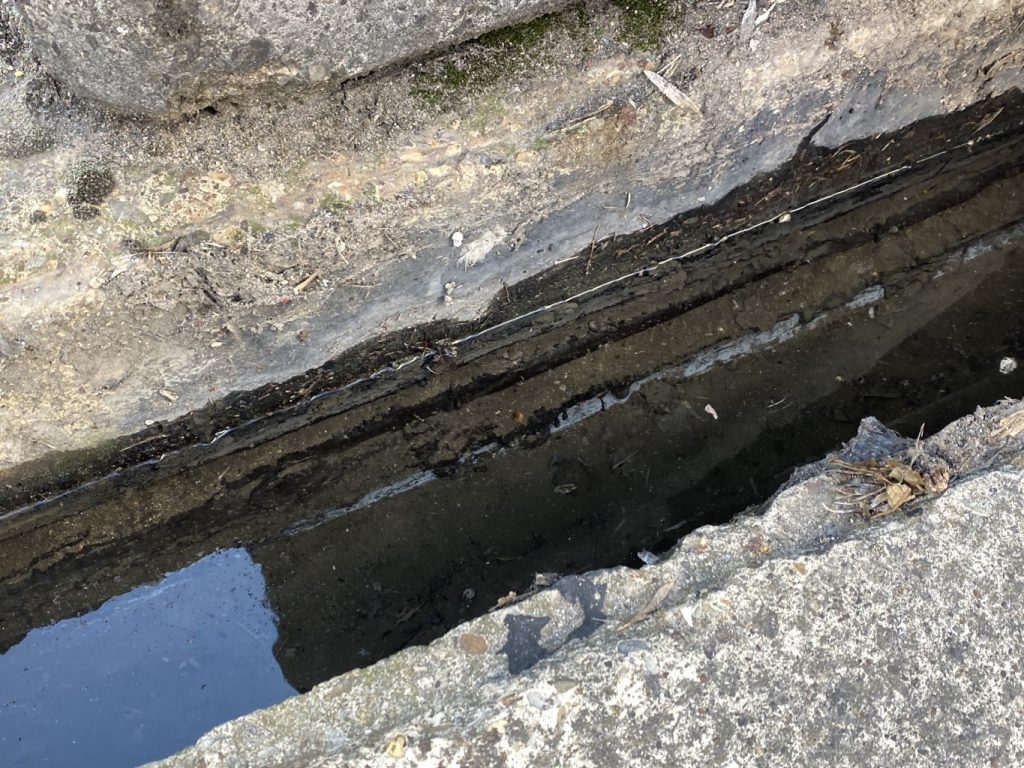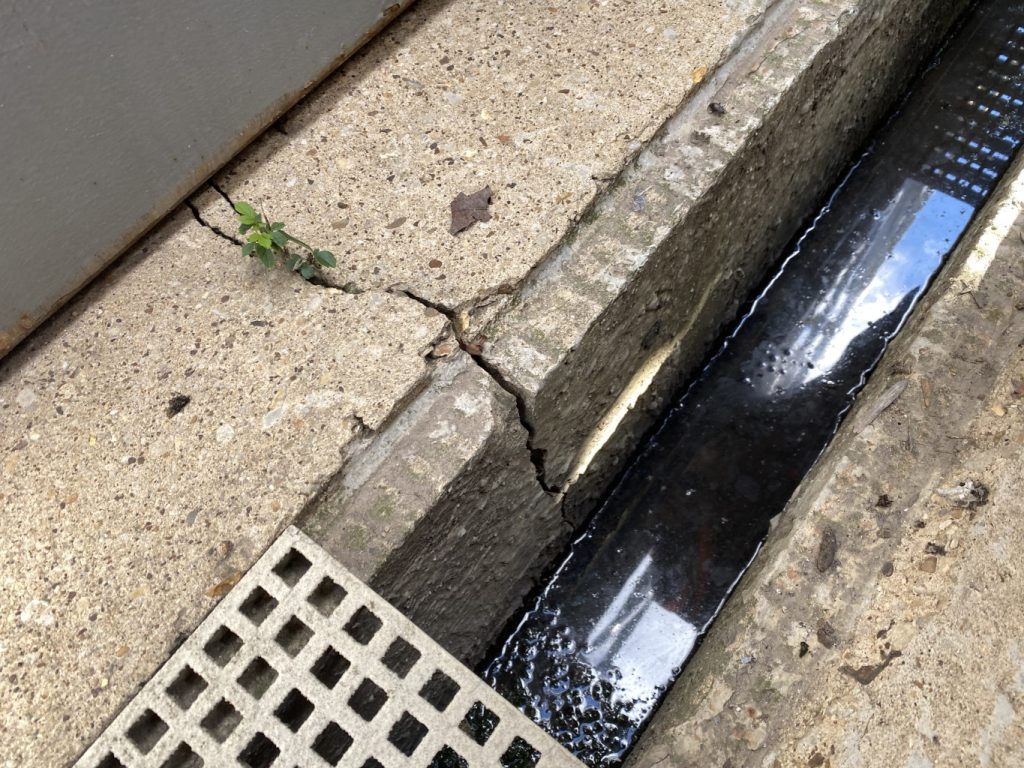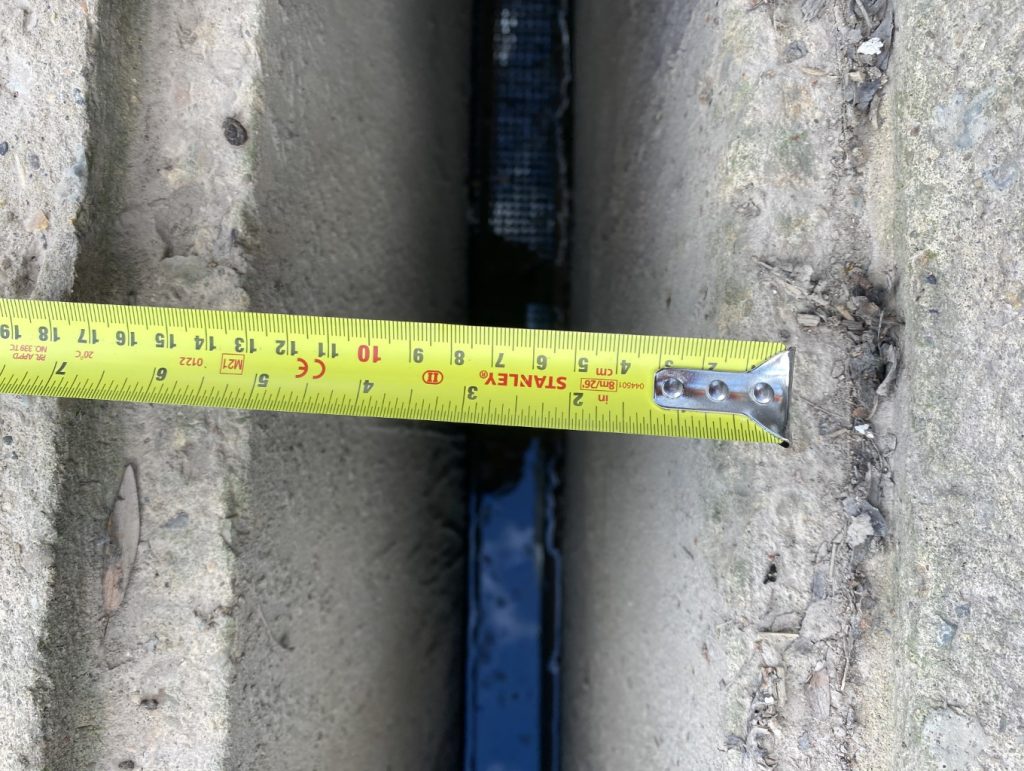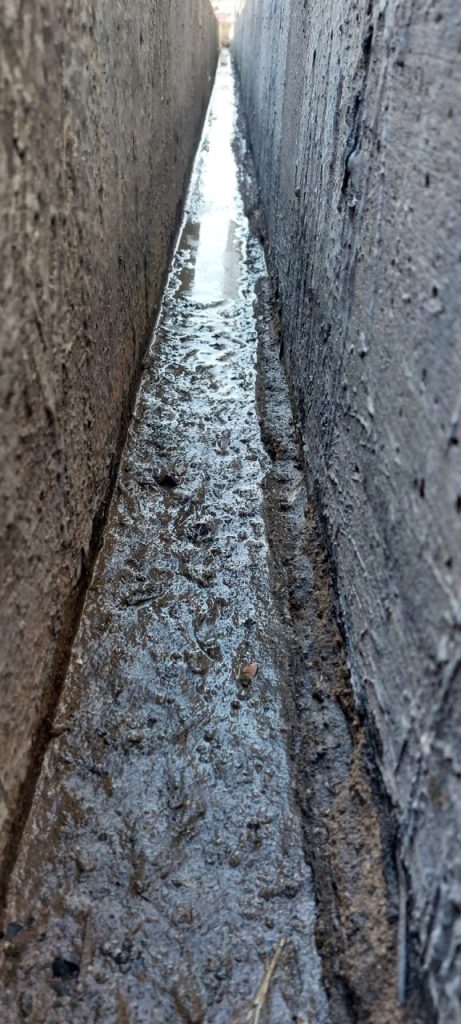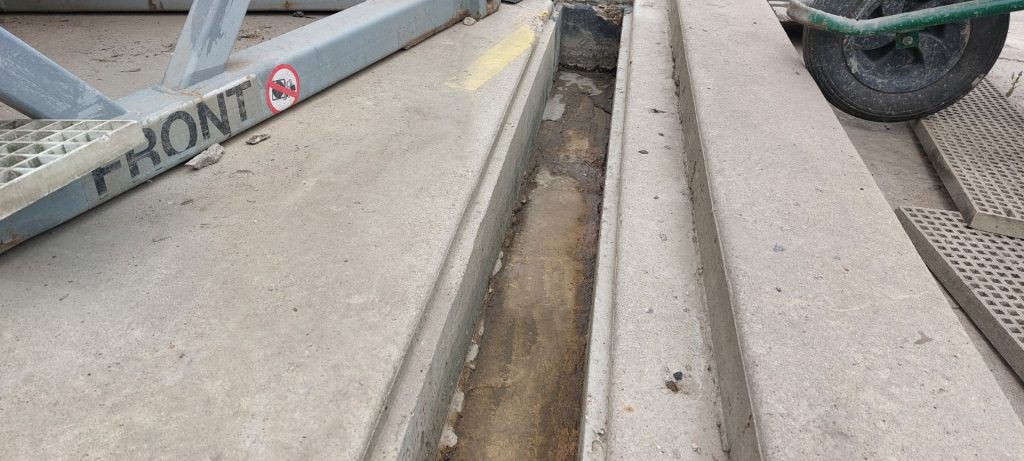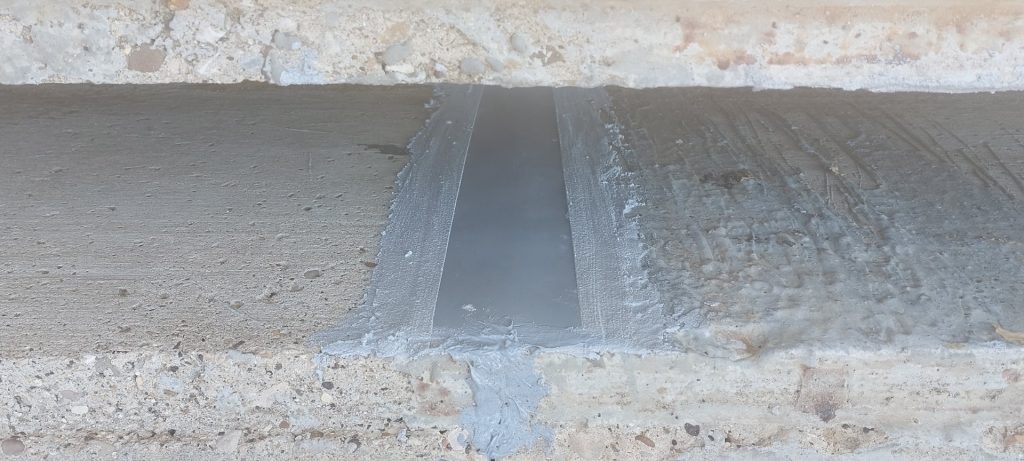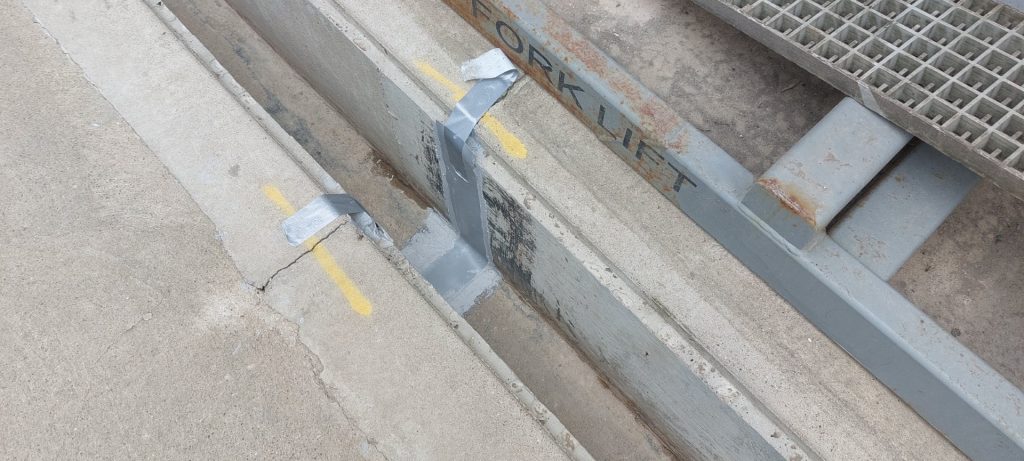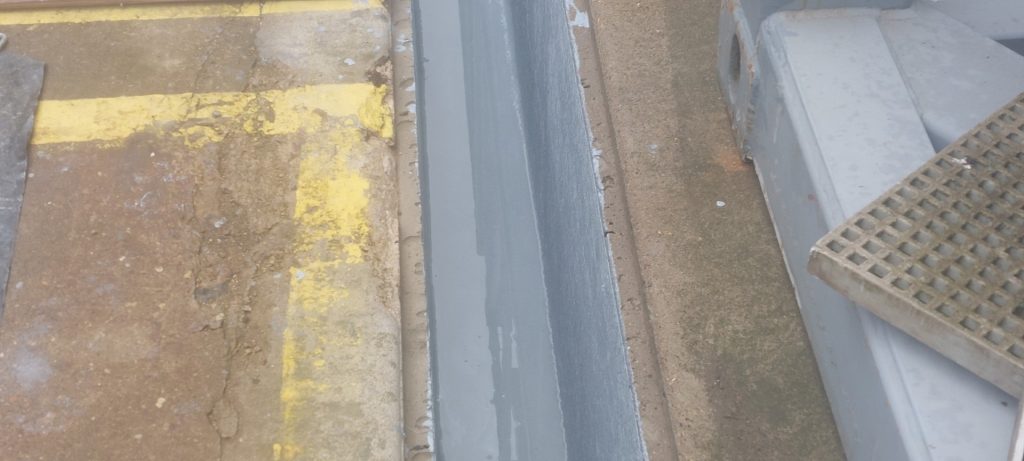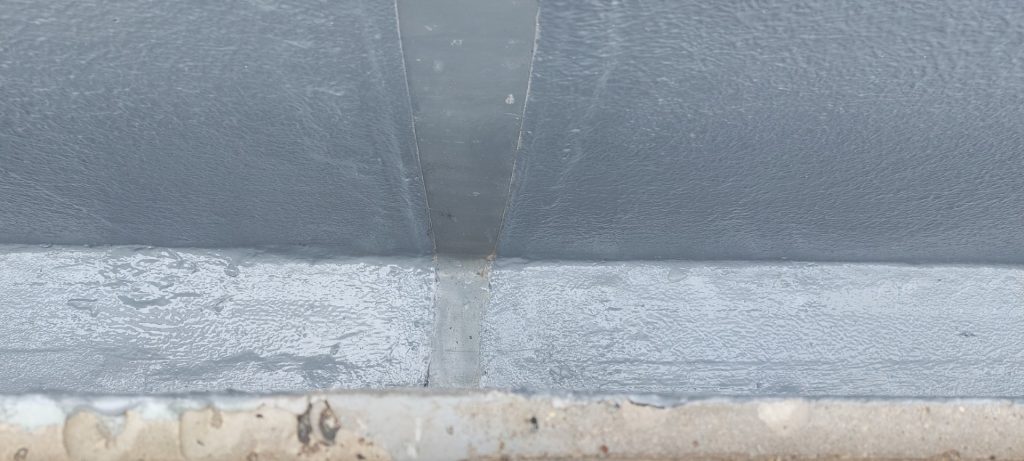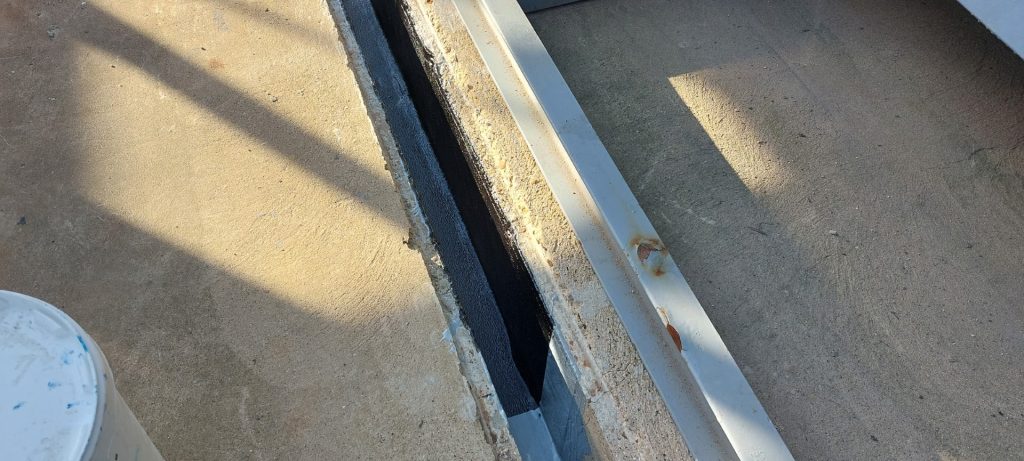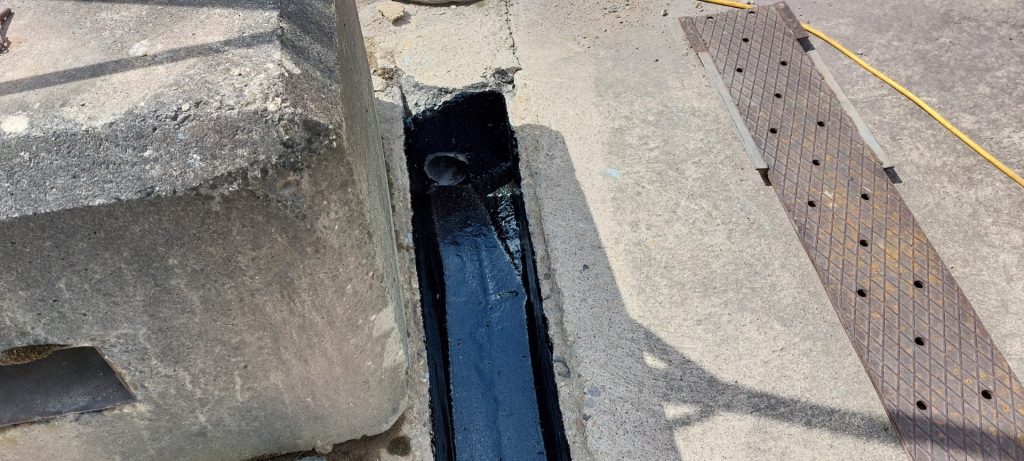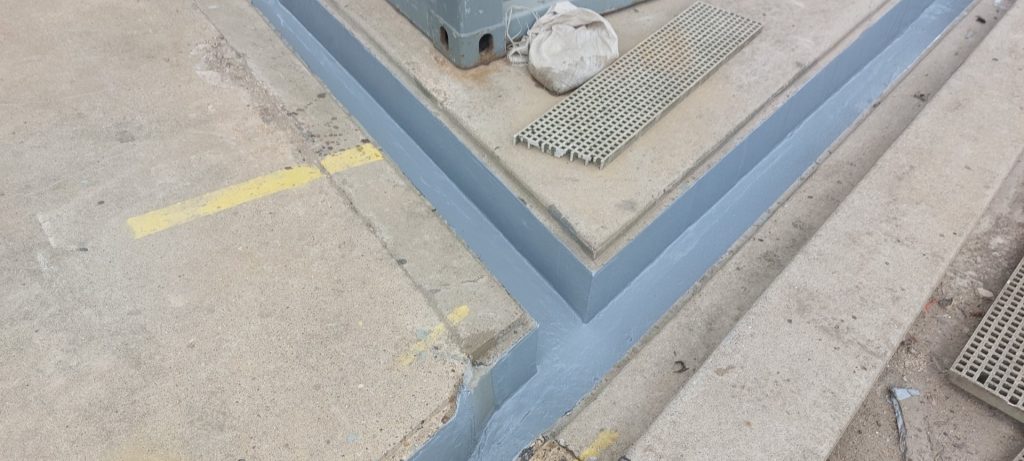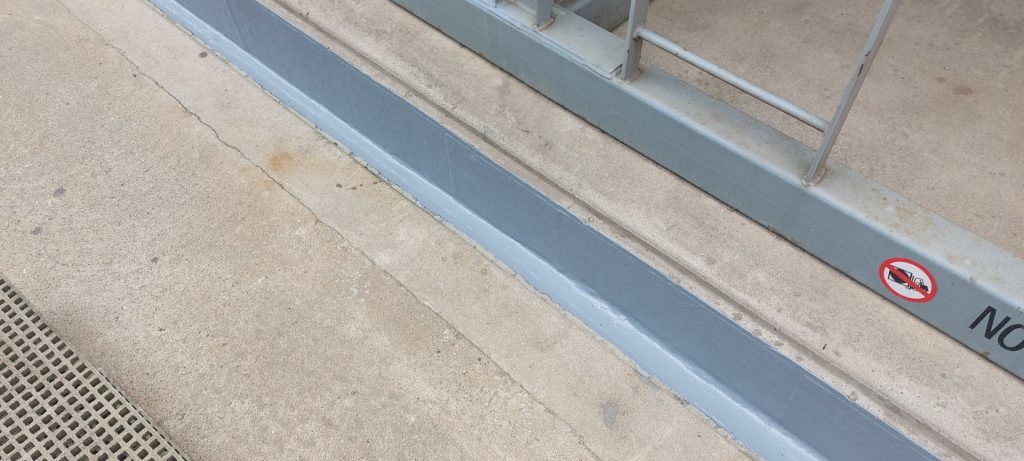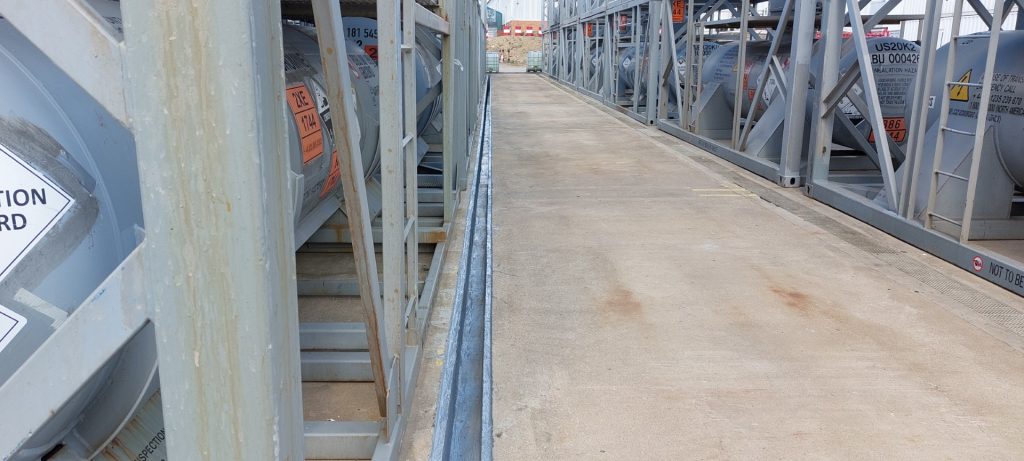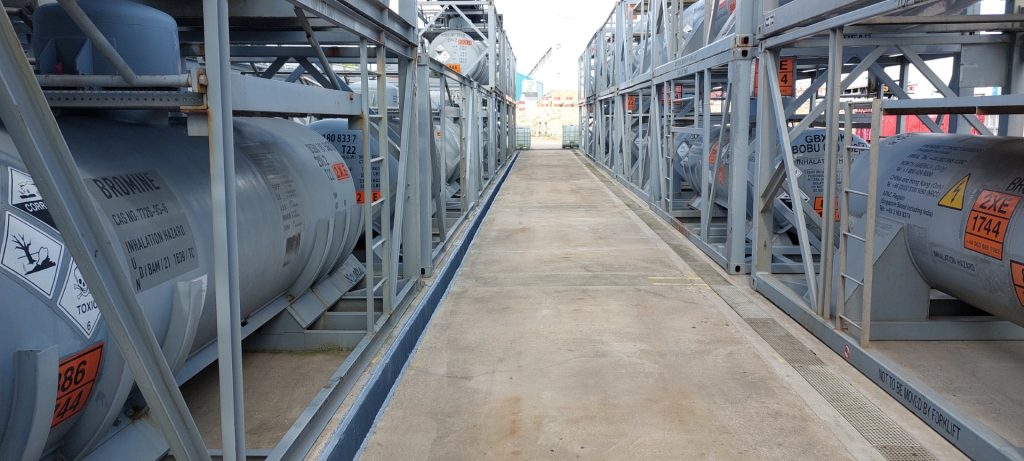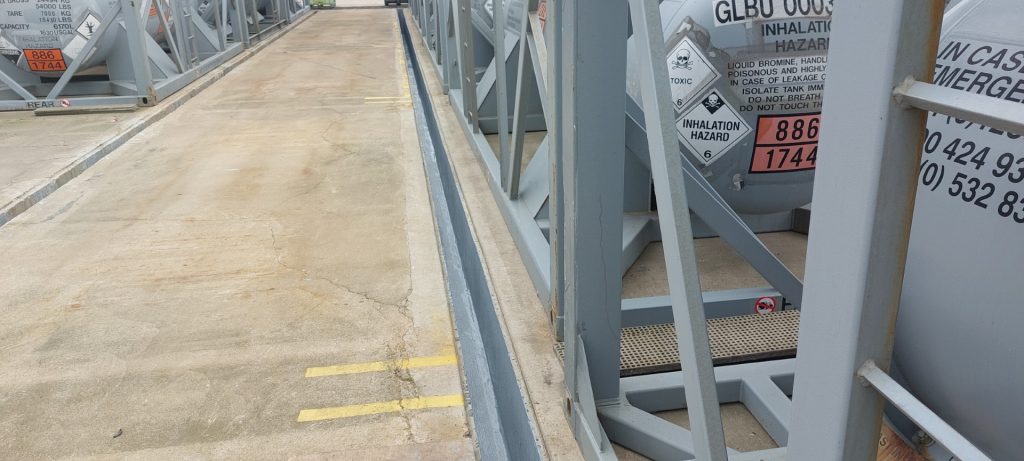Amazingly a much larger national contractor had proposed that they would completely ignore this essential stage in the lining process and just apply a tank lining system directly to the concrete.
As per our standard quality assurance all climatic conditions were tested and recorded throughout the lining application. An additional important consideration for this project is that it would not be possible to abrade the coating properly if the overcoat window was exceeded. This meant that we had to carefully plan the works around wet weather, to ensure that once the coating sequence had commenced each stage could be completed within the required overcoat window.
Remmers Epoxy Universal was then applied to all primed surfaces, taking care not to coat the bandage details previously installed. Remmers Epoxy Universal is a versatile material in that it offers both good chemical resistance as well as crack bridging. This made this lining material particularly suitable for this application given the history of cracking in the concrete susbtrate.


